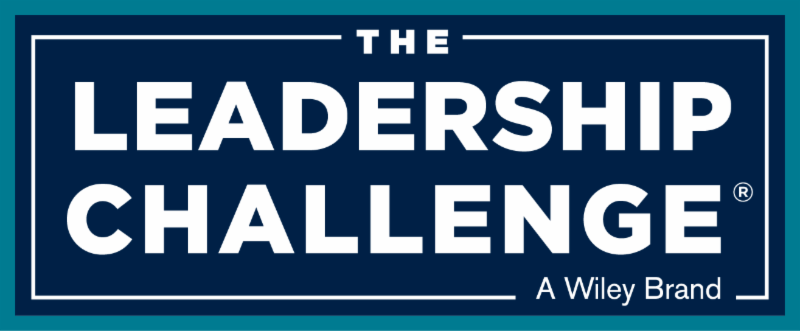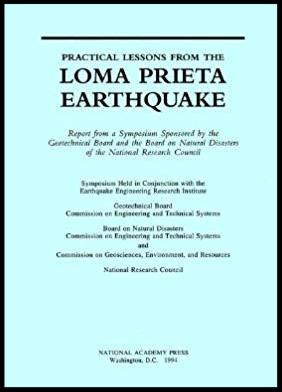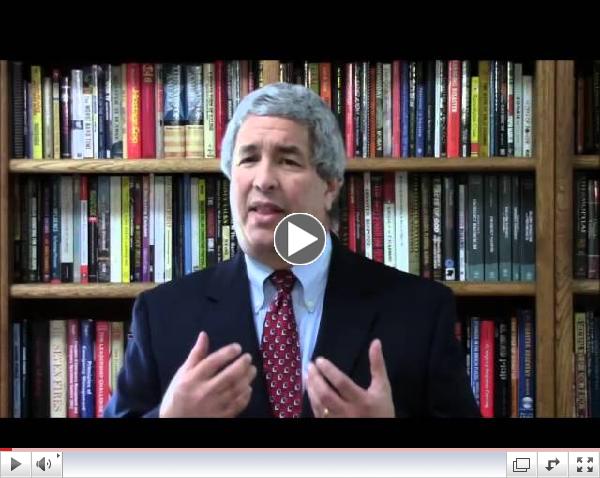|
|
| Loma Prieta Earthquake 1989 |
The Loma Prieta earthquake that struck northern California on October 17, 1989 was actually a moderate 7.1 magnitude earthquake. However, the damage to the Bay Area, some 60 miles from the epicenter, was out of proportion to its magnitude, resulting in 63 deaths and over $10 billion in damages. This brief documentary combines footage from the disaster with comments by first responders and scientists to explain the damage and its implications for the future. |
The following are excerpts from my blog
Canton on Emergency Management. Please visit my blog to see the rest of my articles.
We think of disasters as having a single cause but disasters are complex constructs caused by a conjunction of varying factors.
|

What Is The Leadership Challenge?
 Is leadership a learned behavior or an innate personality trait? While there are certainly naturally charismatic individuals who are considered "born leaders", leadership is a measurable set of behaviors that can be learned and taught. This is the conclusion arrived at by researchers Jim Kouzes and Barry Posner after years of rigorous research. Starting in 1982, Kouzes and Posner set out to understand what happened when leaders performed at their personal best. They conducted hundreds of interviews and reviewed hundreds of cases studies and survey questionnaires. What emerged were five fundamental practices common to extraordinary leadership achievements:
- Model the Way
- Inspire a Shared Vision
- Challenge the Process
- Enable Others to Act
- Encourage the Heart
The Leadership Challenge begins with a 360-degree assessment of thirty leadership behaviors associated with the five practices, the Leadership Practices Inventory. The results are used to identify opportunities for improving as a leader by increasing the frequency of specific behaviors. Based on over thirty years of research, the Leadership Challenge is an effective and practical tool for leadership development.
To find out more about the
Five Practices of Exemplary Leadership
, consider taking
The Leadership Challenge
. Just click on the icon below for more information:
|
|
| Click here to take The Leadership Challenge |
____________________________________
The Leadership Challenge: How to Make Extraordinary Things Happen in Organizations
by James M. Kouzes & Barry Posner
_______________________________
The Leadership Challenge is a registered trademark of John Wiley &
Sons, Inc.
|
Free Resource Guide for Solo Consultants
For solo consultants, true wealth is discretionary time. Don't waste yours on simple tasks that can be handled by technology. This free resource guide reveals the four essential online tools I use to manage my solo consulting practice and save hours of valuable time. And the best part is - they're free!
 Interested in exploring the world of consulting? My membership site might be just the resource you need to get started. You'll have access to blogs designed to answer very specific questions, a resource library of templates and articles, the opportunity to network with peers, and discounts on coaching and training programs. Download the free guide or click on the logo above to go straight to the site.
Interested in exploring the world of consulting? My membership site might be just the resource you need to get started. You'll have access to blogs designed to answer very specific questions, a resource library of templates and articles, the opportunity to network with peers, and discounts on coaching and training programs. Download the free guide or click on the logo above to go straight to the site.
|
|

M
y Blogs
Follow Me
|
|

Welcome to the October edition of Emergency Management Solutions.
October is our official state "earthquake month" when we push our preparedness message by recalling the 1989 Loma Prieta earthquake. I've always found it a bit odd; for true San Franciscans, earthquake month is April when we commemorate the 1906 earthquake and fires, a much more destructive event. I suspect it has something to do with the fact that many people are around who remember 1989 while 1906 is only remembered by those of us with a sense of history. In any event, preparedness is always a good message and I'm all for whatever works.
Regards,
|
|
_
________________________________________________
Lessons from Loma Prieta
Lasting impressions from my first disaster
|
Your first disaster has a formative effect on you. The lessons you learn remain with you throughout your career and are often reinforced by new experiences. It is important to learn the right lessons and that comes with reflection over time. Over the years, I have come to realize that I learned some very valuable lessons from the Loma Prieta earthquake.
Loma Prieta was not my first disaster. I'd been involved in brush fires in California, a flood in Arizona, and winter storms in New Jersey. It was, however, my first as an emergency manager rather than an active participant. It would lead to a position with FEMA and a new career in emergency management and to lifelong friendships that would deeply influence the direction of that career.
|
|
_______________________
________
If you are having trouble viewing my featured article, try clicking on the link at the top of the page. You can always find my articles in the white paper section of my blog site,
Canton on Emergency Management.
|
|
Lying to the Media
One of the basic rules of dealing with the media is to never lie. They will always find out and the story will shift from the initial issue to the lie.
One of the classic examples I use in my classes is an emergency manager who was questioned by a reporter about a contingency plan that had been an issue in a recent assessment of the emergency management program. Instead of telling the truth that the plan was a very low priority given the other things they were working on, the emergency manager blamed a lack of cooperation by several agencies and an adjacent jurisdiction. The reporter contacted the agencies and jurisdiction in question and got a very different story, mostly along the lines of "this is the first we've heard of this." What would have been a minor filler story ended up going on for several weeks and an embarrassment for both the emergency manager and their senior elected official.
There will be times when you can't tell the full story to the media. But in this day of rapid information sharing, it is essential to get out in front of bad news with the facts. Get caught out in a lie and you've destroyed any credibility you had with the public. And the media will have a new story with which to embarrass you and your boss.
Resources
Emergency Operations Center Skillsets
FEMA has developed
EOC Skillsets as a part of
National Qualification System to support standardized qualifications for EOC personnel, while remaining flexible enough to accommodate EOCs of all sizes and kinds. EOC Skillsets let individual EOC leaders build position qualifications according to their organization's needs and resources while building a national vocabulary for EOC personnel qualifications.
Report on Alerting Tactics
The DHS Science & Technology Directorate (S&T) has released Report on Alerting Tactics, which provides recommendations on effective combinations of alerting tactics for various incident types based upon lessons learned from practitioners.
Professional Development Opportunities
November 26-18, 2018
FEMA Emergency Management Institute
Emmitsburg, Maryland
Cost and Access: Free, apply in advance
Provides an overview of scientific principles and concepts shaping extreme events. Topics include basic scientific principles, geophysical and climate science in disasters, the scientific fundamentals of chemical, biological, radiological and nuclear threats.
The 21st Annual Emergency Management Higher Education Symposium
June 3-6, 2019
FEMA Emergency Management Institute
Emmitsburg, MD
More information to follow soon.
|
|
|
No More Heroes - Part 2
I was watching an episode of an old science fiction series the other night and plot reminded me of the article I did last month on our unrealistic expectations for heroes from the past. The plot involved a race that was so fearful of foreign invasion that they created a series of "super weapons", sentient machines that were essentially invulnerable. To ensure that the weapons could never be used against them, the machines were programmed to accept commands only from someone who was racially pure.
Sounds like a good plan, right? And it was. The machines eliminated the invaders. However, the programmers based the machines' racial purity concept on an ideal architype rather than a realistic one. They modeled their ideal on propaganda rather than science. The result was predictable. After destroying the invaders, the machines continued to eliminate anyone that did not match their parameters for racial purity and destroyed the civilization completely. After all, nobody's perfect.
This is precisely my point: nobody is perfect, whether we are talking about racial architypes or moral standards. To judge an historical figure based on current morality is a bit unfair, to say the least. I'm not saying we need to rush out and erect statues for them or name a building after them, but we should be able to separate their accomplishments from the mores of the times in which they lived.
|

Practical Lessons From The Loma Prieta Earthquake
By The National Research Council
Following the 1989 Loma Prieta earthquake that caused major damage throughout northern California, the Geotechnical Board and the Board on Natural Disasters of the National Research Council convened a symposium of experts to assess the disaster and to identify strategies that might be useful in future earthquakes.
The document consists of six keynote papers summarizing the conclusions of the various sessions of the symposium. While many of the papers address technical aspects (e.g. Geotechnical Aspects, Buildings, Lifeline Perspective, and Bridges), two of the papers are of direct interest to emergency managers: Emergency Preparedness and Response and Recovery, Mitigation, and Planning.
The Loma Prieta earthquake occurred almost thirty years ago and many of the findings from this symposium have been adopted by emergency managers and reaffirmed in subsequent disasters. However, there is still much to be gleaned from this document, particular in the comments from responders and emergency managers. While this is not an easy read, it is a worthwhile one.

|
|

Emergency Management: Concepts and Strategies for Effective Programs
by Lucien G. Canton

|
|
Need a speaker for your next conference? I offer keynotes, seminars and workshops.
 |
|
Three Reasons Why I'm the Right Speaker for Your Conference
|
|
|
Speaking Engagements
Now taking bookings for 2019!
|
|
| |
|